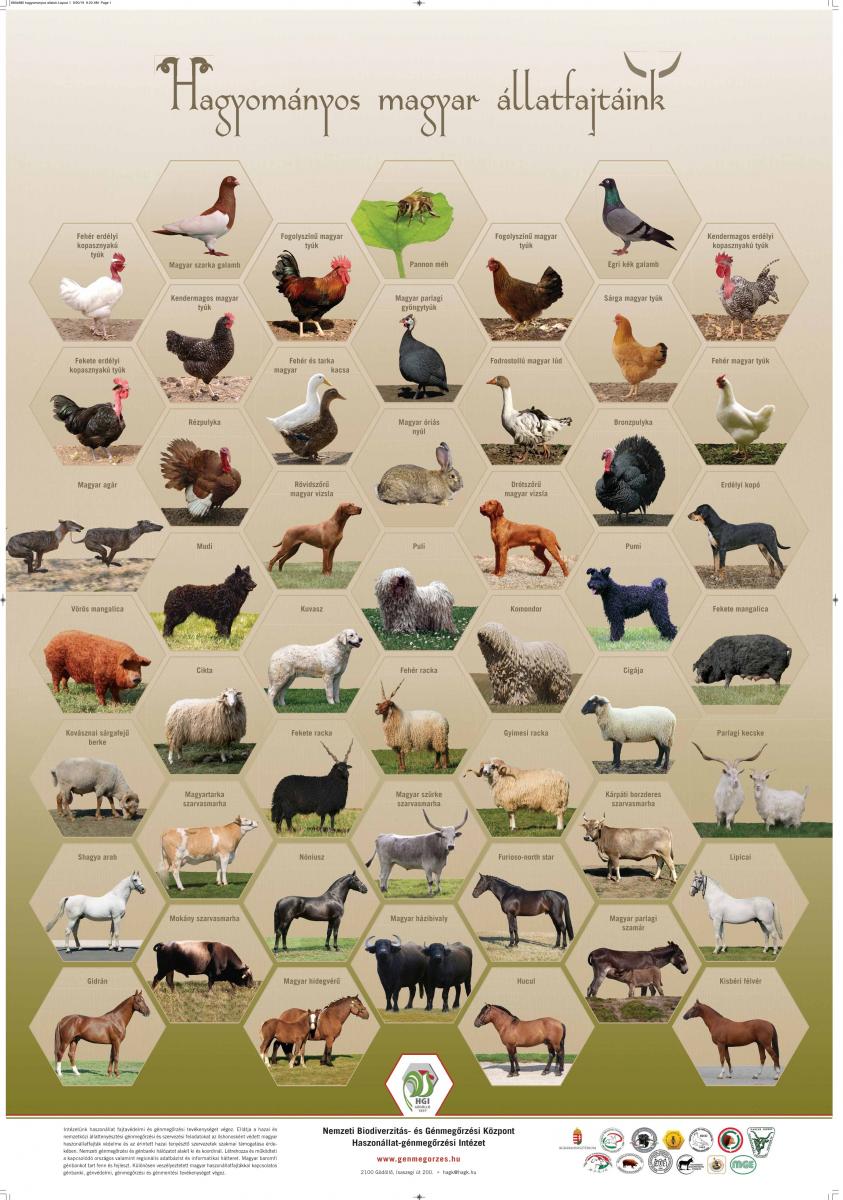Introduction of old Hungarian farm animal breeds kept in the gene bank demonstration farm of HGI
Since its reorganization in 2010, KÁTKI/HGI has been functioning as a centre of gene conservation of old Hungarian farm animal breeds. Gene conservation and research tasks were complemented by basic activities of education and rural development. For that reason we established a demonstration and gene bank farm of old, indigenous Hungarian farm animal breeds, which aims at creating a nucleus stock of the most endangered of them, demonstrating the protected indigenous breeds and their use for educational and research purposes, involving breeds into rural development schemes, as well as participating in the gene rescue programme of breeds which do not enjoy official protection yet.
In the followings old Hungarian farm animal breeds kept in the gene bank demonstration farm of KÁTKI/HGI are described briefly.
Old Hungarian poultry species and breeds maintained in KÁTKI/HGI
KÁTKI has started its poultry gene conservation programme based on traditions dating back to many decades in 1990. The registered nucleus stocks of 14 old Hungarian poultry breeds are maintained in the gene bank unique today in Hungary. These breeds are described briefly as follows:
- Old Hungarian Chicken Breeds
- Transylvanian Naked Neck Chicken Breeds
- Expectable performance of Old Hungarian Chicken breeds
- Turkey Breeds
- Goose Breeds
- Old Hungarian Duck Breeds
- Hungarian Landrace Guinea Fowl
Old Hungarian cattle species
Old Hungarian pig species
Old Hungarian sheep species
- Hungarian Racka Sheep
- Transylvanian Racka Sheep
- Hungarian Cigaja Sheep
- Yellow Headed "Kovásznai" Sheep
- Cikta Sheep
Old Hungarian fish species
Gene conservation and breeding activity in the Institute of Apiculture of KÁTKI
The Institute of Apiculture of KÁTKI has been functioning again named as an institute since 2010. One of its key duties is the examination of the breed traits of the Pannonic variety of the Carniola (carnica) bee (Apis mellifera carnica var. pannonica), the only breed of honey bee recognized in Hungary since 2001. Main duties also extend to the conservation of the breed and the establishment of its gene bank stock. The breed has been referred to as Pannonic bee since 2012. We give a brief description it as follows:
